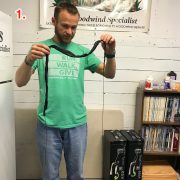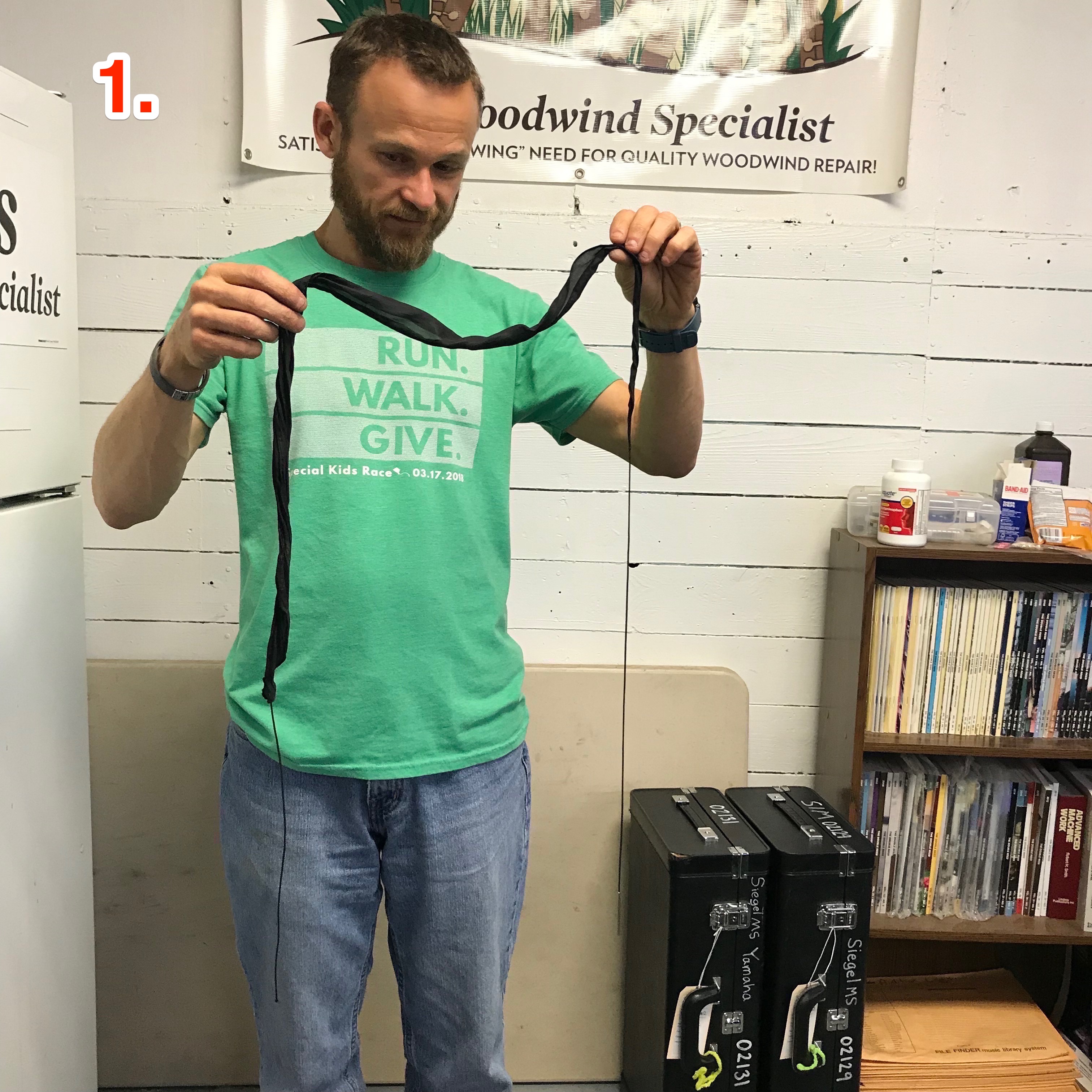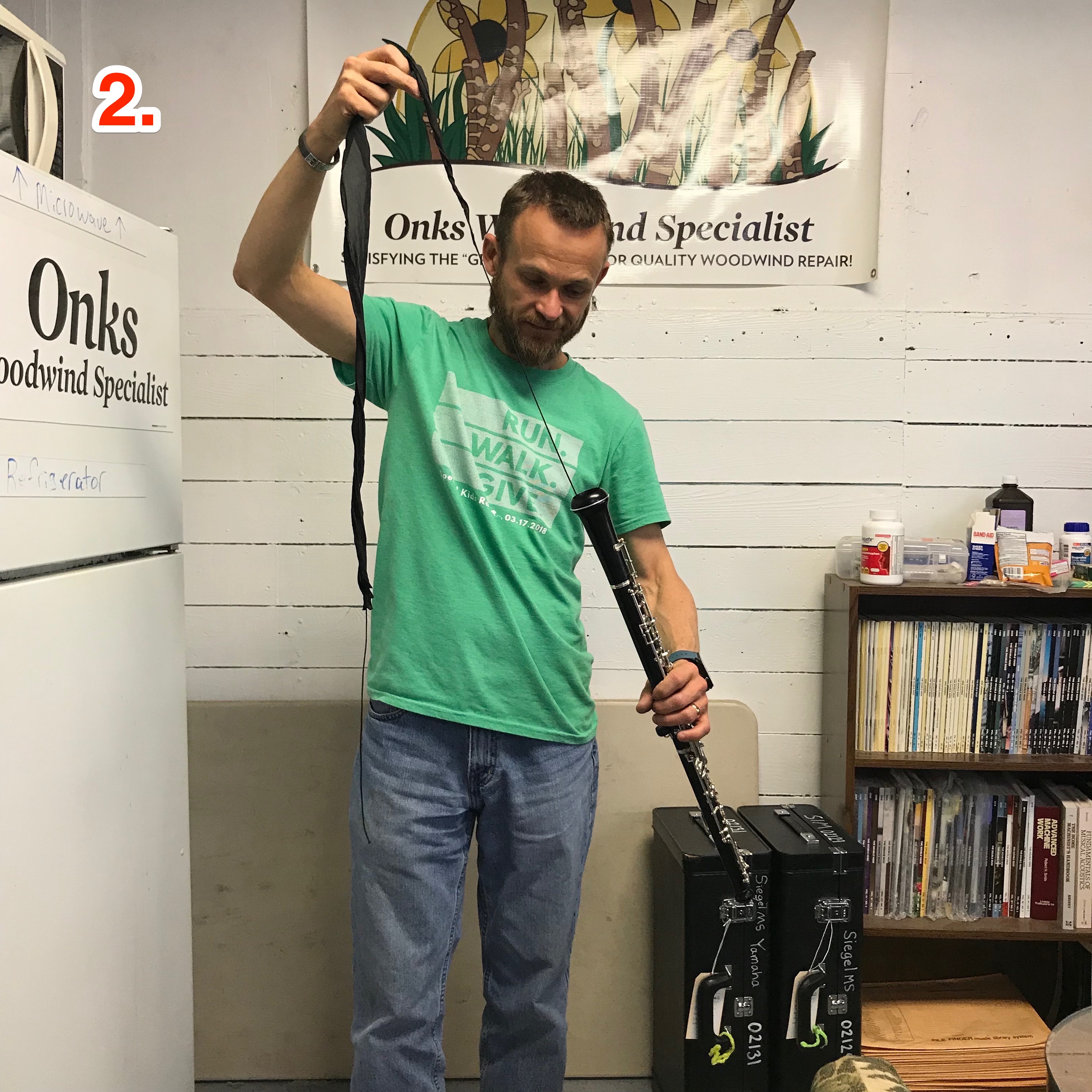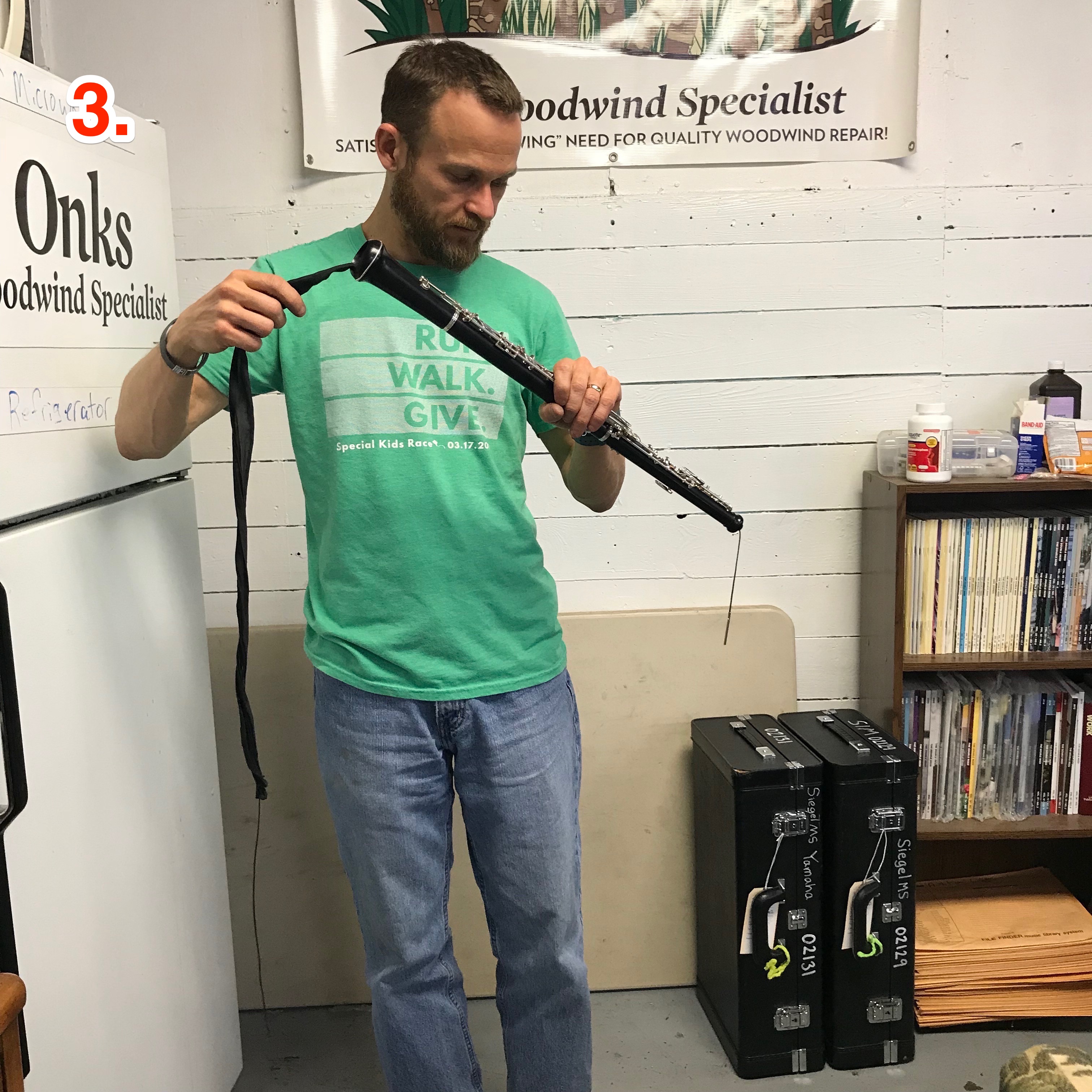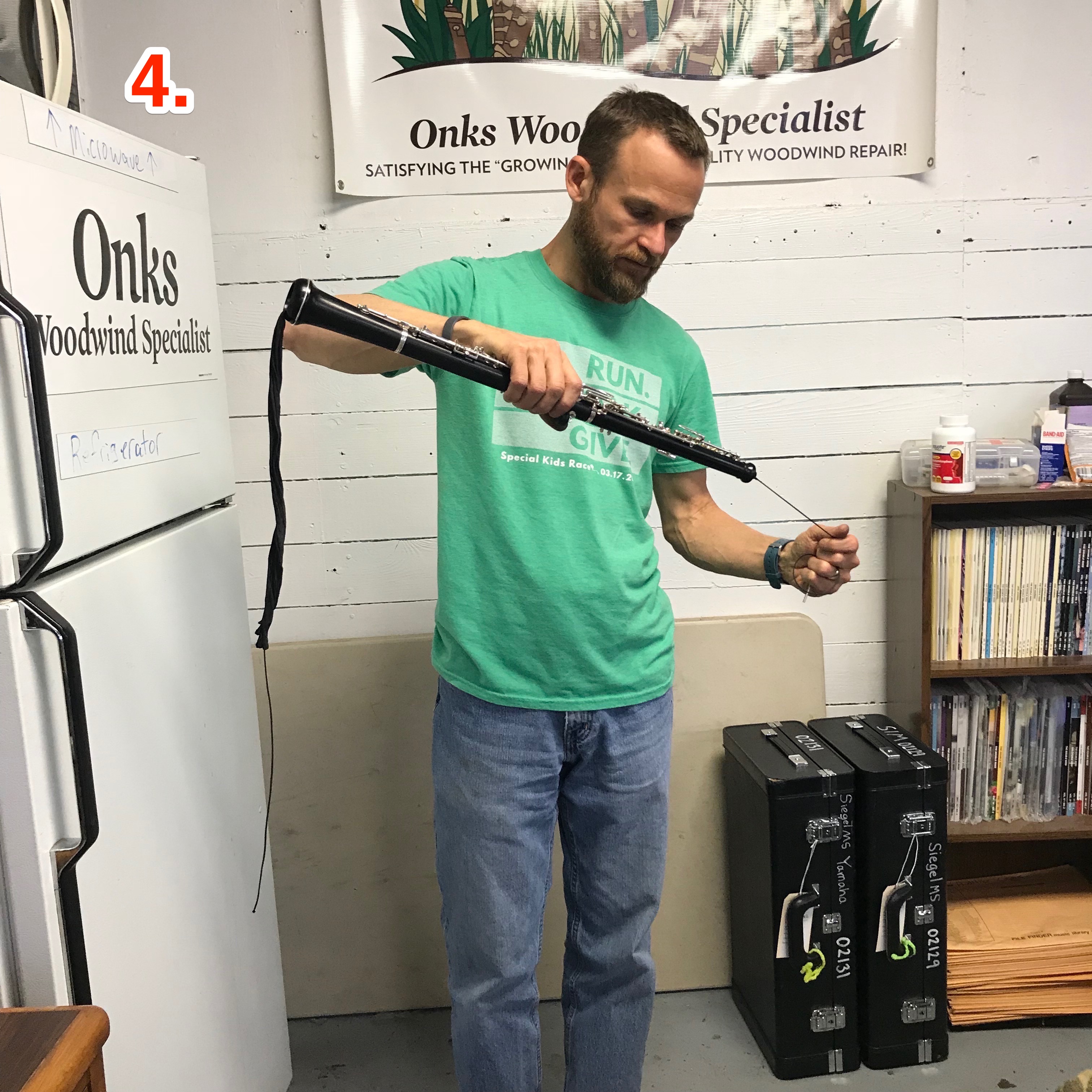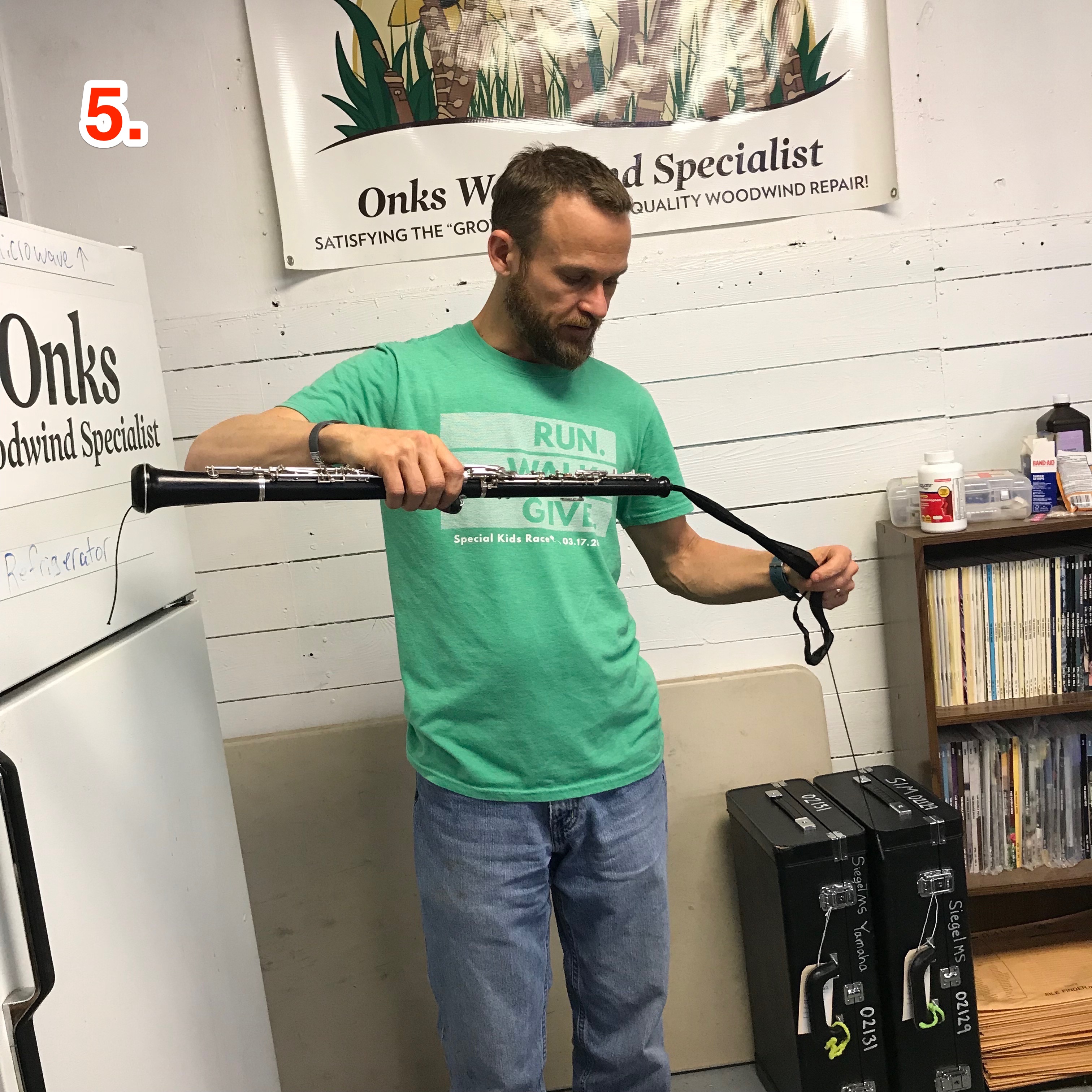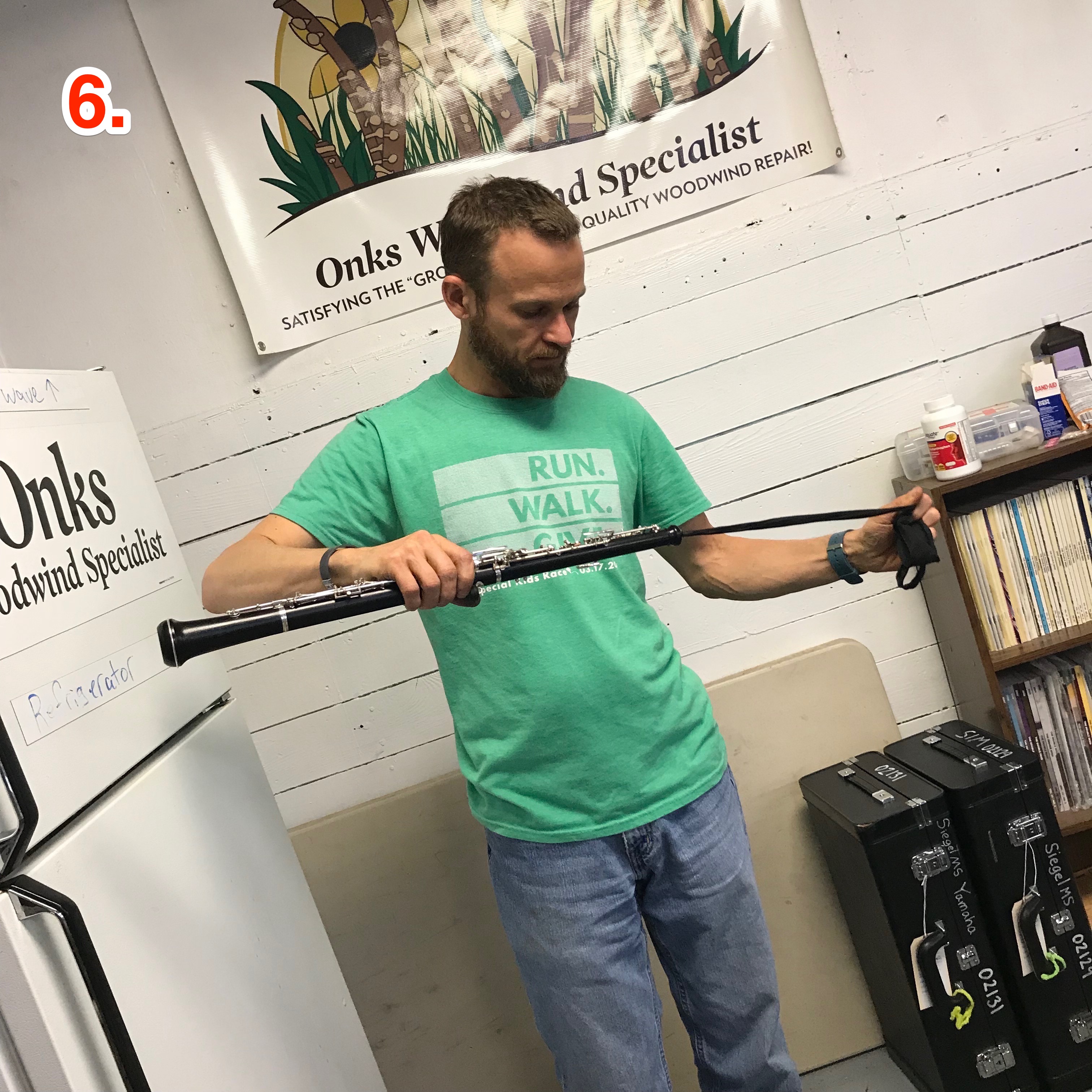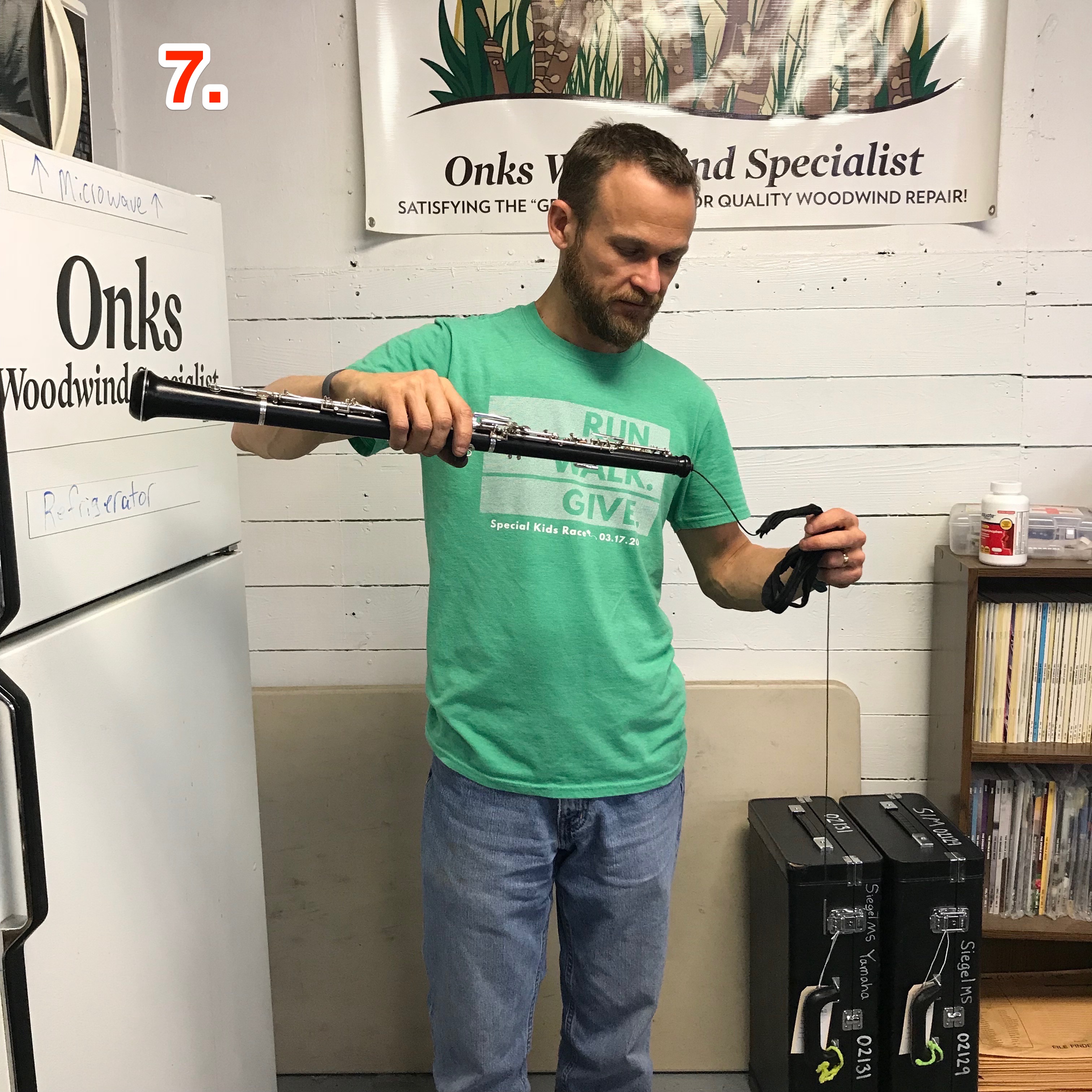Post 55: Swabbing your Oboe by Numbers
Click on the pictures below to view each step individually.
- Before pulling the swab through your instrument, carefully examine it for knots. A knot in the silk portion of the swab will guarantee that your swab gets stuck, especially in an oboe. Even a small knot in the string of the swab can cause havoc.
- Once you are certain there are no knots in your swab, carefully begin lowering the weighted end of the swab into your instrument. Notice I am holding the swab so it cannot bunch up on itself as I start to lower it into the instrument. Notice my eyes are on the swab and instrument, not my friends next to me as they are packing up their instruments.
- Slowly lower the swab through the bore of your instrument. Speed is the key, all of your motions should very slow and calculated. Notice again, my hand is holding the silk portion of the swab so it does not bunch up as I slowly feed the swab through the oboe.
- Start pulling the swab from the weighted end very slowly, looking at BOTH ends as you pull.
- Still pulling the swab very slowly all the way through the oboe.
- Still pulling the swab very slowly all the way through the oboe.
- By confirming there are no knots in your swab, making calculated movements, not talking to your friends and pulling the swab through your instrument slowly, you are almost guaranteed to have a successful swabbing experience.
Other helpful hints:
-
Just like when you are playing your instrument, do not talk to your next door buddy while swabbing. Most swabbing incidents occur because the swabber is not paying attention. While swabbing, do not talk to your friends, but focus on the swab and instrument at all times. Doing this and pulling the swab very slowly will ensure that you have a successful swabbing session.
-
If you do not want to chance getting your swab stuck, another option is to swab your instrument in sections. Instead of pulling the swab all the way through each section, pull until the swab gets tight then pull the swab back out the same way it went in.
-
Use a non-pull through silk swab for another very safe swabbing method.
-
And of course, you can use a feather instead of a swab to have a successful “swabbing” session.

